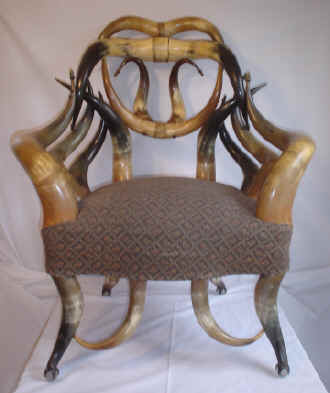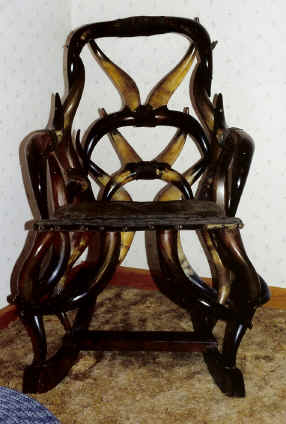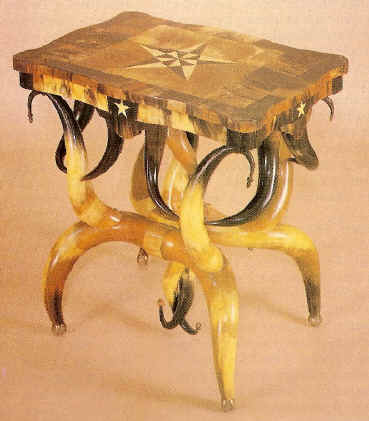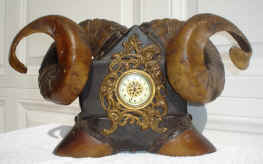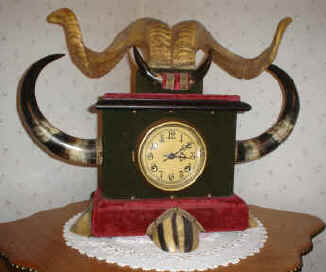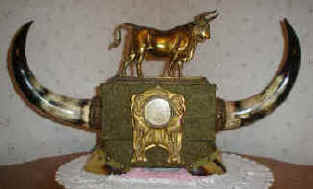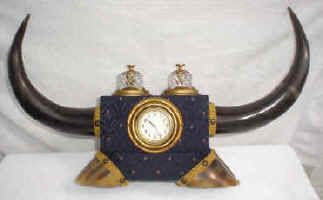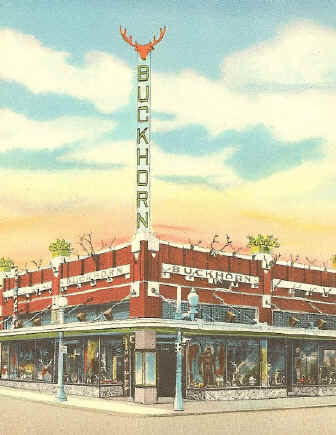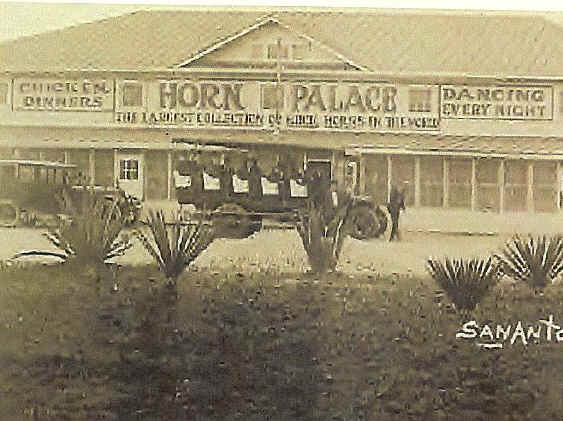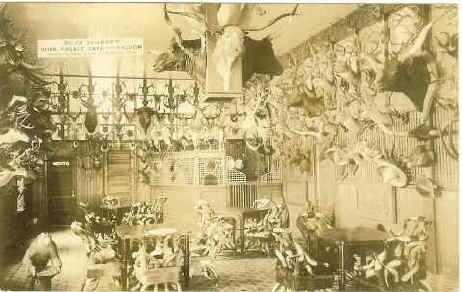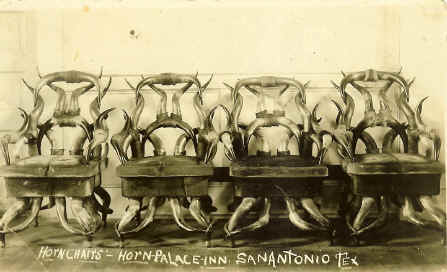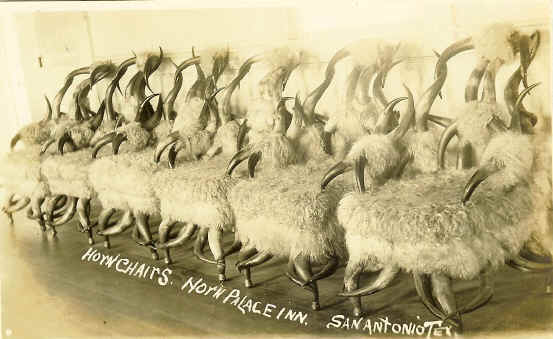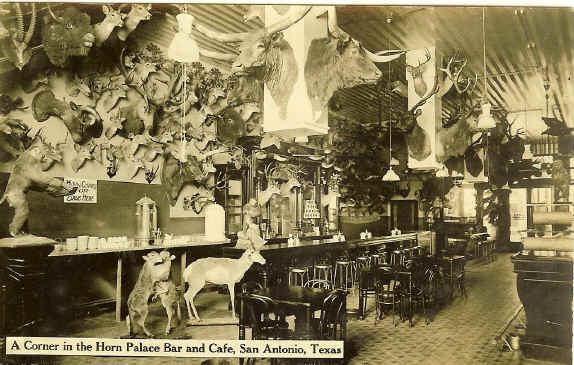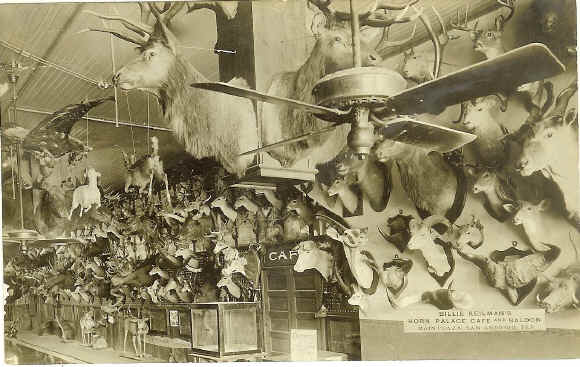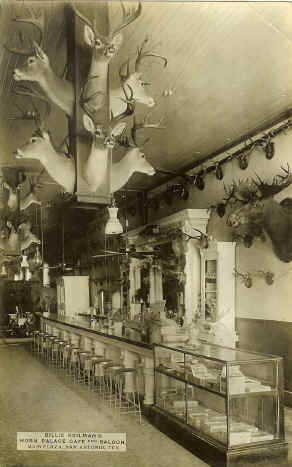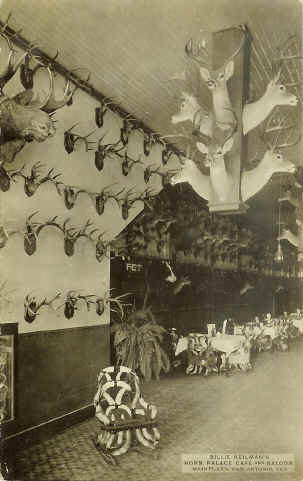The Buckhorn, Wenzel
Friedrich
&
Billie Keilman's Horn Palace
The Buckhorn Saloon was founded in 1881
by Albert Friedrich, son of cabinet maker and famed horn furniture maker, Wenzel
Friedrich, who, beginning in 1880 made among the most beautiful horn furniture. The
Buckhorn was located on Dolorosa Street in San Antonio. Albert was very fond of deer
antlers and cattle horns, which he used to decorate his saloon. As word of this got
around, he began offering to trade a drink for horn or antler specimens. The collection
grew, and over the years it became larger and larger -- and so did the Buckhorn's
reputation. It became a San Antonio landmark and was known around the world. In its
heyday, it was the largest horn collection in America.
During the same time, another massive collection of horns and mounted specimens was being gathered by saloon-keeper Billie Keilman who displayed them in his Horn Palace in San Antonio, beginning in 1912, an establishment well-known for its chicken dinners, music and nightlife. Billie claimed to have the largest horn collection in the world with over 5000 specimens from many countries. The Horn Palace was sold to the Buckhorn in 1921, which then made it the undisputed horn king of San Antonio. What remains of the Buckhorn's collection may be seen today in San Antonio.
IMPORTANT: There is much confusion about chairs made by Wenzel Friedrich. Read this link (CLICK HERE) before you buy or sell to compare his work with that of William Mittmann, Charles Puppe and the Appel Bros., all of whom are Texas makers.
|
HORN CHAIRS |
||
|
Wenzel Friedrich, maker. San Antonio, Texas. Two chairs of the 1880's. Acorn finials of horn. Tiffany glass ball casters. Materials offered on Friedrich chairs include: * a silk plush (velvet) * buggy seat leather, angora goat, jaguar, catamount and fox, * and a cane and walnut seat on his office chair model. The Tiffany glass ball casters were also used by Charles Puppe and William Mittmann, horn furniture makers of the 1880's in San Antonio. Mittmann also fitted the tips of his horns with acorn finials. By 1884, Friedrich was having trouble finding in his own area the size and shape of horns he wanted for his furniture and began seeking a supply from Old Mexico. To see Texas-made chairs by Charles Puppe, William Mittmann, the Appel Bros. and chairs from the Horn Palace click here and compare them to Wenzel Friedrich. |
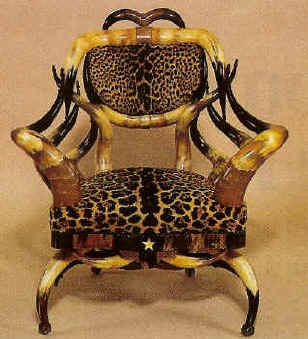 Among the most beautiful of all horn chairs ever made. Friedrich offered this platform rocker, with horn-veneered seat frame, inlaid ivory star, and two cushions in cat hide. Sold new in 1889 for $80. |
Friedrich No. 9 Chair from Catalog of 1890 |
|
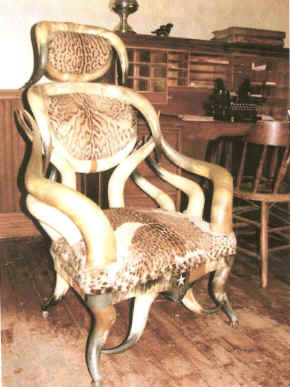 As of May 2015, this is the only known example of this style of Friedrich chair. Seen here on display at the Boot Hill Museum in Dodge City, Kansas. |
| \ |
ROCKING CHAIRS |
|
|
TABLES |
|
|
The beautiful horn--veneered table To see more horn tables, click here. |
|
|
CLOCKS and INKWELLS |
||
|
|
|
|
|
BILLIE KEILMAN'S HORN PALACE |
|
|
|
|
|
|
Billie Keilman Read about Billie Keilman CLICK HERE |
|
|
|
|
Read about the Buckhorn and the Horn Palace,
Wenzel
Friedrich, Albert Friedrich and Billie Keilman by clicking here.
View more horn
chairs, hatracks and tables by clicking on these links!
Horn Chairs
Horn Hatracks
Horn Tables
Metz Collection
Compare Chairs by Puppe, Friedrich, Mittmann &
the Appel Bros.

